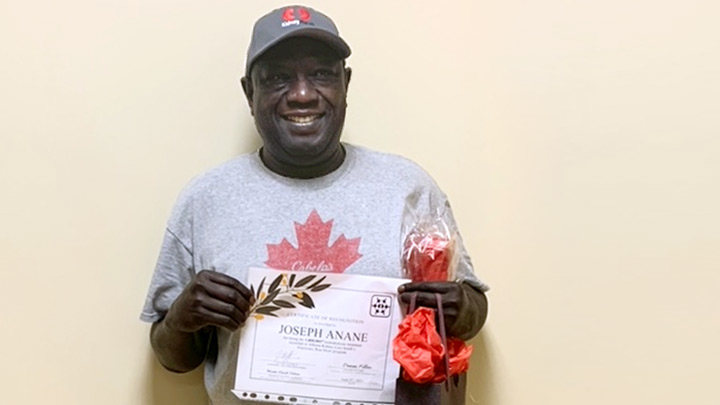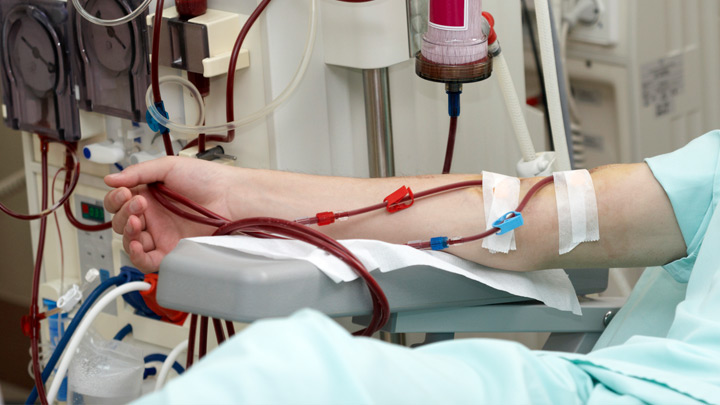
June 29, 2021

Alberta Kidney Care South presented a certificate to longtime patient Joe Anane — who received their millionth dialysis treatment — along with a gift package from the Kidney Foundation of Canada. Photo supplied.

Alberta Kidney Care South recently marked a milestone — performing its millionth dialysis treatment.
Story by Nathen Gallagher
Alberta Kidney Care South now has a million reasons to celebrate the care it provides to its dialysis patients. On June 9, the team recorded its millionth dialysis treatment on its Electronic Run Sheet (ERS) technology, a milestone achieved at the Sheldon M. Chumir Health Centre in Calgary.
Dialysis patient Joe Anane, who received the millionth treatment, was presented with a certificate of recognition by the unit, as well as a gift package from the Kidney Foundation of Canada.
“I like Chumir HD (hemodialysis),” says Anane. “Staff are caring and compassionate, with good work ethics and teamwork. I feel warm and welcome coming for dialysis every time. I know everyone here. We’re like a family.”
Alberta Kidney Care South, which runs 13 hemodialysis units in Calgary and southern Alberta, reached its latest milestone with a big assist from ERS, a homegrown software interface which automatically records reams of dialysis patient data during treatments, making life easier for both patients and healthcare staff.
Traditionally, recording a hemodialysis treatment on paper can be tricky and slow. For patients whose kidneys have failed, life-sustaining treatments take place four hours a day, three days a week. During every treatment, nurses used to copy more than 150 values from a dialysis machine onto a paper run sheet, a time-consuming task with a risk of human error.
The Electronic Run Sheet, or ERS for short, serves as a paperless data bridge between the dialysis machine and the patient’s health record — and automatically captures all 150-plus values.
For Anane, more than 1,200 of his treatments over nine years of therapy are stored in ERS. Conveniently, these records follow him wherever he goes for dialysis in southern Alberta, and are readily available to his caregivers.
According to Julius Litorco, supervisor of the renal data team that built ERS from scratch in 2009, the program has been so successful that Connect Care is now working to mimic its functionality in the new provincial health record.
“The large amount of historical treatment data in ERS is used every day in the clinic,” says Litorco. “It’s also of great value to medical research. More than 200 million clinical values have been automatically recorded for dialysis patients since 2009.”
Anane says he likes that his dialysis information and vital signs are electronically stored, and appreciates the extra quality time he gets to spend getting to know his nurses, who no longer have to take time watching the dialysis machine and writing up his information by hand.
Marnie Hauck-Bohmer, hemodialysis unit manager for the Sheldon Chumir site, says she’s proud that her unit provided the milestone millionth treatment, and adds that dialysis units around the world face challenges when they don’t have a modern innovation like ERS.
“Paper is time-consuming,” she says. “It can be hard to read someone’s handwriting, the papers can get lost, and sometimes it’s hard to find old runs or compare the information.”
But ERS makes it easy and convenient, says Hauck-Bohmer.
“You have a detailed history for every patient. You can easily compare clinical values. Our doctors and nurses use it for communication and documentation, and we can see a patient’s general condition at a glance.”